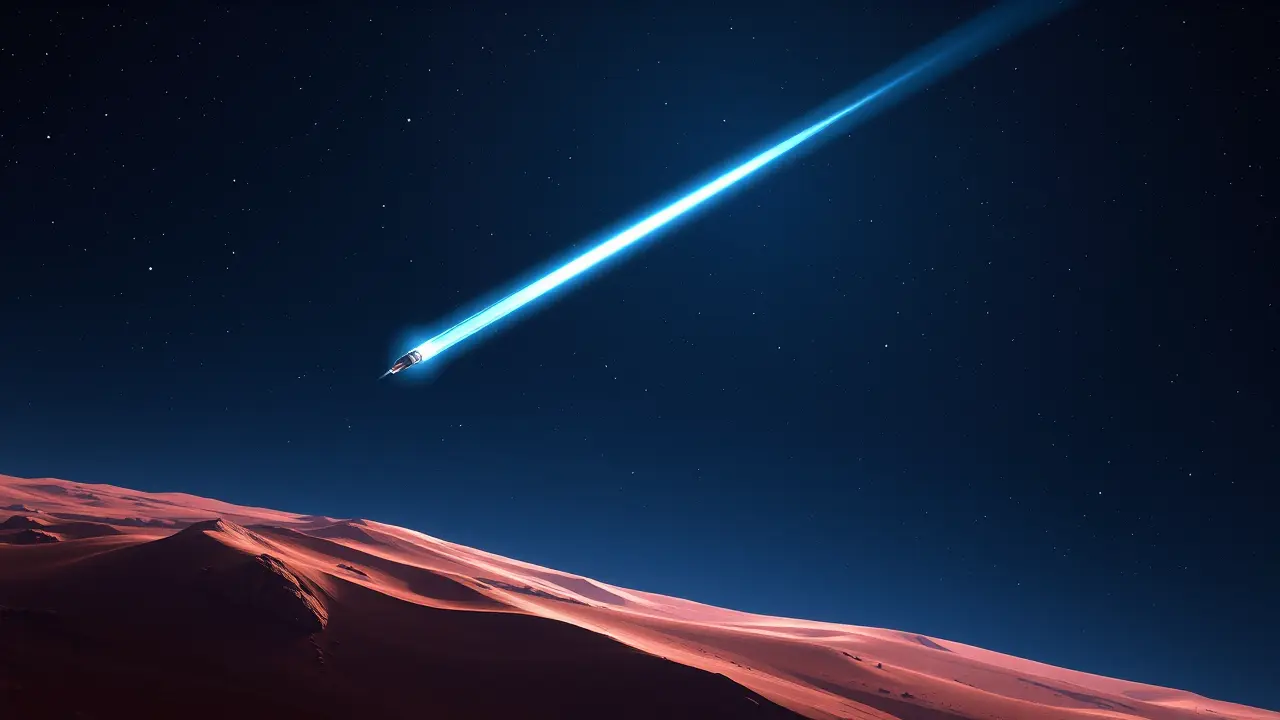An interstellar visitor lights up the Red Planet’s sky
In the vast, silent theater of our solar system, a faint, distant actor has taken the stage, its performance captured by the unblinking eyes of ESA’s Mars orbiters. This is comet 3I/ATLAS, only the third interstellar visitor ever confirmed, a tiny, icy nomad from the profound darkness between stars now briefly illuminated in our celestial neighborhood.As it journeys inward, heated by our Sun, it has begun to reveal itself, developing a glowing coma—a temporary atmosphere of gas and dust that, to the trained observer, is as dramatic and telling as the fiery tail of a rocket at liftoff. For those of us who live and breathe this cosmic frontier, events like this are not merely data points; they are profound reminders that our solar system is not an isolated island but a dynamic port in a galactic sea, constantly receiving traffic from origins we can only dream of.The very nature of this object—its speed, its trajectory shouting its extrastellar origins—forces us to reconsider our place in the cosmos. Researchers are now in a race against time, meticulously dissecting the spectral fingerprints of its light to understand its fundamental makeup.Is it a rocky iceberg, a pristine relic from the formation of a distant planetary system, or something more complex, its chemistry telling a story of violent ejections or gentle gravitational nudges from a long-lost home star? This is the ultimate forensic science, conducted across light-years, and every photon collected is a clue. The significance of this observation cannot be overstated; while ‘Oumuamua, the first known interstellar object, was a fleeting, enigmatic rock that left us with more questions than answers, and Borisov provided a more comet-like profile, 3I/ATLAS offers a new, critical data point in a desperately small sample size.Each one is a unique key, and together they might one day unlock the door to understanding the composition and diversity of planetary building blocks throughout the galaxy. This rare event is also a tantalizing glimpse into the future of space exploration, a direct precursor to ambitious missions like the Comet Interceptor, which is being purpose-built to lie in wait for such an elusive visitor, ready to launch on a moment's notice to chase one down and provide a close-up view.Imagine the scientific bounty: a spacecraft flying alongside a object born around another star, analyzing its surface, its outgassing jets, its very essence. The data would be transformative, rewriting textbooks on planetary science and perhaps even touching on the grand, unanswered questions of panspermia and the distribution of the raw ingredients for life across the Milky Way.The successful observation of 3I/ATLAS from Mars orbit is a testament to our growing capabilities; our robotic sentinels are no longer just studying their primary targets but are now sophisticated enough to act as deep-space observatories, tracking and characterizing transient phenomena in the void around them. This multi-role functionality is a quiet revolution in how we operate in space.It echoes the visionary drive of figures like Elon Musk, who see Mars not as an end but as a stepping stone, a basecamp for humanity's eventual journey to the stars. In that context, watching a star from another system pass by the Red Planet feels deeply symbolic—a cosmic handshake across the gulf.The challenges, of course, are immense. These objects are fast, faint, and their appearances are unpredictable.Detecting them requires ever-more-sensitive survey telescopes, and reacting to them requires a level of international coordination and agility that is still being developed. But the payoff is a piece of a foreign solar system delivered to our doorstep.As we continue to stare into the deep sky with increasingly powerful instruments, we can expect to find more of these travelers. They are the scouts from other worlds, and with each one, the universe feels a little smaller, a little more connected, and infinitely more wondrous. The glow from this comet's coma is more than just excited gas; it is a beacon, illuminating the next great frontier in exploration.
It’s quiet here...Start the conversation by leaving the first comment.
